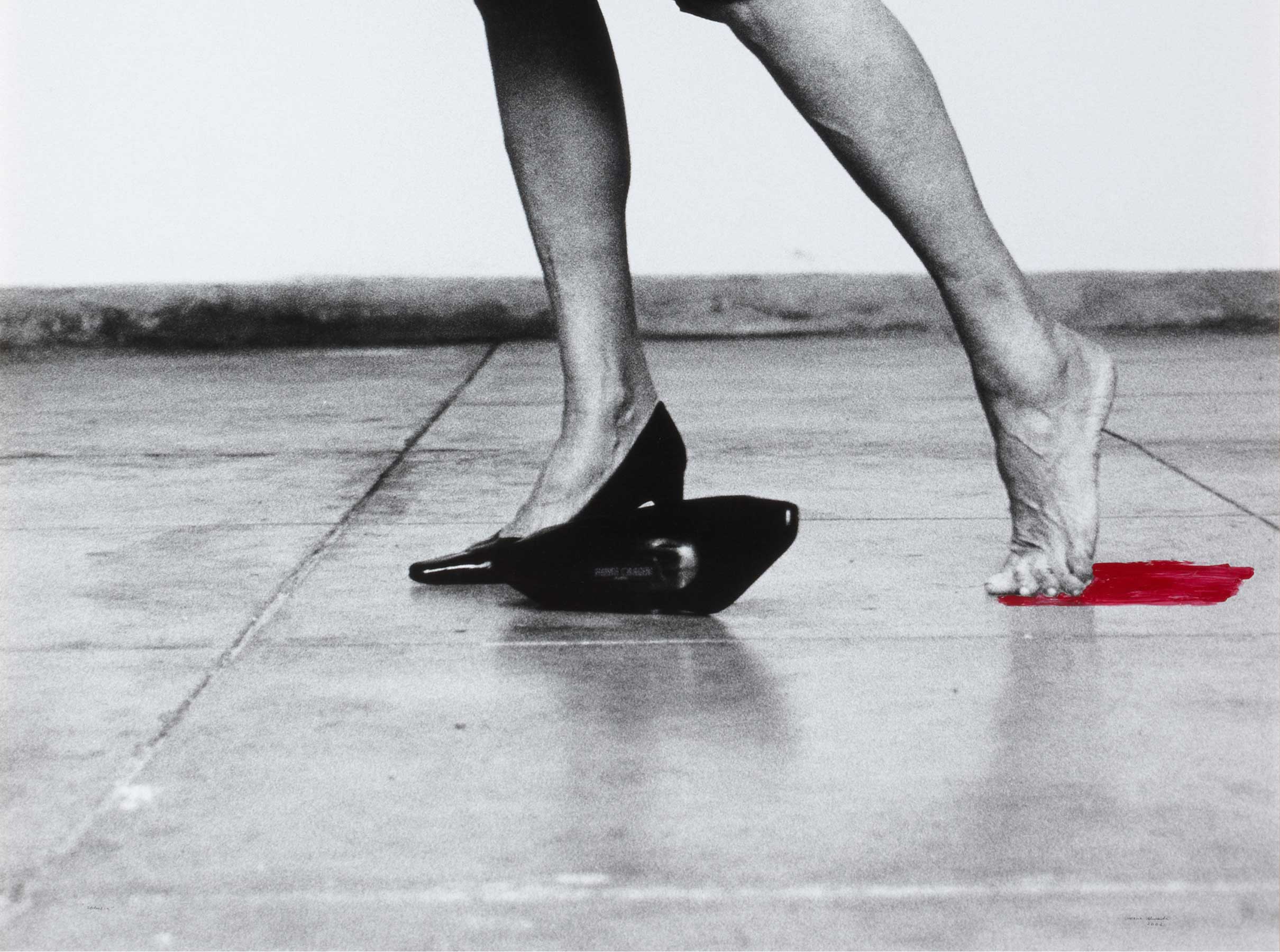How Is the Air Up There?
- 2018
- Colour photograph, Giclée printing on acid-free paper Photo Rag Baryta
- 83,5 x 59 cm
- Edition Ed 5 + 1
- Cat. F_221
- Acquired in 2019
Art and activism make common cause for the sake of visibility. Images are used as standards for solemn acts, just like the banners at a demonstration; prior reflection on broad issues and the formal result of that reflection; a materialistic tool or a varied, complex archetype for the changing concept of beauty. Art work is thought of in the same way, i.e., as facilitating the creation of images and imagery. The debate as to the role of culture in society and politics may seem recent but it is actually as old as the world itself. In his famous engraving The Battle of The Pictures (1744), William Hogarth depicted a jumble of painted scenes of the divine and the mundane, the mythological and the traditional, in a battle between those scattered in the foreground (a plea for libertarian individuality) and the alienated pictures in the background as a clear representation of the masses led by a single idea. The engraving also features a standard and a number of placards.
This is how political art acts: sometimes as a standard bearer but almost always as a placard. Italian curator Marco Scotini has described Ressler as 'one of the new generation of artists operating in the grey area between art and politics'. However, Ressler sees that grey area as a restoration of light, a space that concentrates details, lit up anew by the awareness of information uncovered and revealed. He has made numerous well-produced documentary films in which the starring roles are taken by the real protagonists in Madrid, Athens, New York, Venezuela, Norway and Germany. Witness accounts and the exploration of conflicts denote a real intention on his part to get to the bottom of issues and express himself with the voice of others; to place on record that visual art is a mechanism for watching the watchers and an argument for overcoming banal dichotomies concerning the role of art as a mere representation and of museums as mere guarantors of its historical and financial validation. The grey area calls into question the policies of large corporations, especially the extractive industries and those that manage natural resources, and the lack of brave economic and social policies on the part of governments, who bow down before globalised economic power with astonishing ease.
In the series of photos How Is the Air Up There? Ressler uses wide-angle lenses to show several groves of trees in a wood from ground level. In their midst and at their tops what looks like the remains of a camp can be seen. There is also a hand-written placard that reads 'Dear RWE, Respect existence or Expect Resistance! Hambacher Forest'. This is not just a proclamation but a poetic play on words that links existence with the need for resistance. It is reminiscent of some of the great utopian phrases used from May '68 to March 15 2011 in Madrid, such as the iconic 'If you don't let us dream, we won't let you sleep'. Cabins can be seen high up, and a walkway connecting two trees. The occupation of Hambacher Forest near Cologne marked head-on resistance by the public to coal company RWE, which held the concession on an open-cast lignite mine up to 2045 and which planned to cut down much of this 12,000-year-old forest. Moreover, they planned to do so at a time when coal was in decline as a power source, and in clear contravention of Germany's advanced legislation on environmental conservation and energy efficiency. This nature reserve was occupied for several years by a group of between 100 and 200 people. The photos were taken in April 2018, and on 13 September that year almost 4,000 police officers moved in and spent two weeks, day and night without interruption, destroying the architecture of resistance set up by the demonstrators. In these actions, a 27-year-old journalist died and a court case was brought. The ruling, announced on 5 October, forced the company to vacate the forest, at least temporarily.
This series of photos reinforces concepts such as association and collective action, and shows them as actual movements of group solidarity. It conveys the idea that it is these movements and not other, external elements that can best defend the common good, as they are aware of the history and the need to conserve the territories near where they live. Ressler's distant images can be interpreted as equidistant, but he is rather distancing himself so that a broader image is revealed, showing the full scale of the issue. They also seem to show the artist as a mediator, a link here between the activists, their protest actions and the public in their heightened awareness.
Other works by Oliver Ressler

